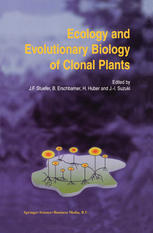

Most ebook files are in PDF format, so you can easily read them using various software such as Foxit Reader or directly on the Google Chrome browser.
Some ebook files are released by publishers in other formats such as .awz, .mobi, .epub, .fb2, etc. You may need to install specific software to read these formats on mobile/PC, such as Calibre.
Please read the tutorial at this link: https://ebookbell.com/faq
We offer FREE conversion to the popular formats you request; however, this may take some time. Therefore, right after payment, please email us, and we will try to provide the service as quickly as possible.
For some exceptional file formats or broken links (if any), please refrain from opening any disputes. Instead, email us first, and we will try to assist within a maximum of 6 hours.
EbookBell Team

4.0
26 reviewsSpontaneous self-cloning or clonality is a widespread phenomenon in the plant kingdom, and has a wide array of ecological and evolutionary implications. This volume is the outcome of an international workshop on clonal plant biology aimed at illustrating current progress and recent developments in the scientific study of clonality in plants. The first section of this book includes a collection of original research articles which demonstrate the wide variety of approaches and scientific challenges linked to clonality in plants. The topics covered in this section include ecological and evolutionary implications of sexual versus asexual propagation, including life-history evolution and sex-ratio dynamics, the importance of internal resource transport and remobilization of storage products for the invasiveness and competitiveness of clonal plants, a survey of clonal growth forms in grassland communities, and studies on the interactions between clonal plants and animals and fungi. The approaches used range from experimental studies on a broad variety of systems to mathematical modeling of clonal growth and its consequences. The second part features discussion and review papers on a diverse array of subjects, ranging from developmental considerations of clonality, principles of selection and evolution in clonal plants, a survey of clonality in algae, to potential implications of clonality for plant mating, and beyond. This part of the volume aims at presenting novel ideas and hypotheses, and at summarizing existing knowledge in previously under-researched areas, thereby providing directions for future research initiatives.
This book captures ongoing cutting-edge research in the field of clonal plant ecology and evolution. It is directed to anyone from the undergraduate to specialist level who is interested in the biology of the intriguing phenomenon of asexual propagation in plants.